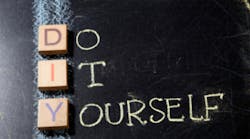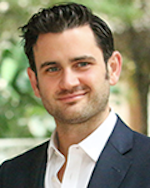The media is becoming interested in the dangers of what our profession has been calling DIY dentistry. Great!
Dentists have been concerned about companies that are manufacturing orthodontic appliances without the direct supervision of dentists. At the 2018 ADA House of Delegates, the profession passed a resolution to officially warn the public about the harm they may be doing to their oral health. I’m glad to see that news organizations are running with the story and spreading the word.
There’s just one problem—the term DIY. Check out this story on DIY dentistry from NBC Miami. Their reporters contacted companies who manufacture these appliances. Here is what a couple of companies told the reporter from NBC Miami:
“Our team completely agrees with the ADA. Generally, DIY dentistry is a bad idea. Unless of course it's brushing your teeth. Our direct-to-consumer model is not DIY.”
Another company sent NBC Miami the following statement that said their company, “Is not a ‘do-it-yourself’ service . . . our service is completely doctor prescribed and doctor monitored. All customers are treated by a dentist or orthodontist, licensed in their state, who creates their customized treatment plan and then monitors the process remotely through the platform with regular check-ins. The customer can connect with their treating doctor at any point through the treatment plan.”
Their statement when on to say, “We have helped over 300,000 people get the smile they love, safely and effectively, while bringing access to the over 60% of US counties that do not have access to orthodontics for mild to moderate spacing and crowding."
So that’s a clever way to dodge the ADA warning. These companies are claiming that their products are not DIY because the users are not designing the aligners themselves; a dentist is doing that remotely.
My main concerns are that these users (they are not patients) (1) are potentially not good candidates for orthodontic treatment, and (2) are unsupervised during the course of treatment. Perhaps calling this therapy DIY dentistry isn’t truly capturing the essence of our clinical concerns. Apparently that term also allows for folks on the other side of the debate to more easily dodge the question.
How about “unsupervised dentistry?” What do you think? Let’s talk about it in our Private Facebook Group.
Cheers,







